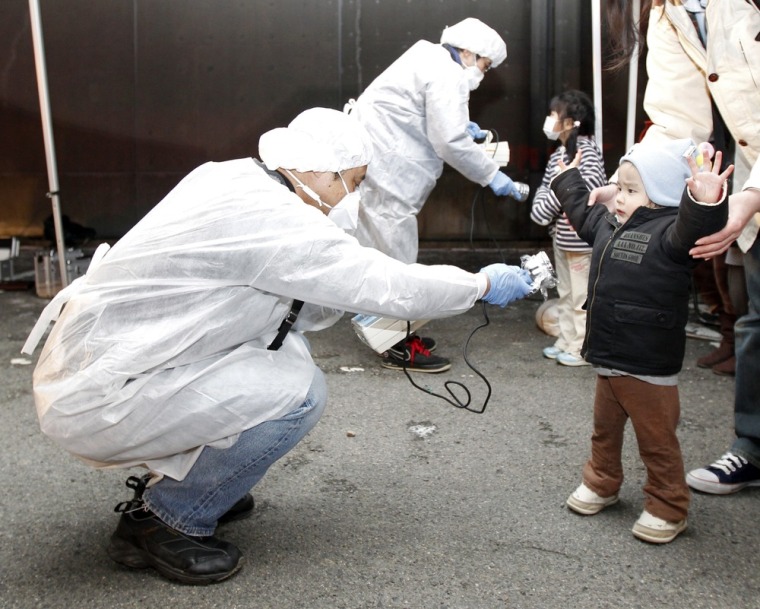As the operator of an earthquake-damaged nuclear reactor in Japan raced to try and prevent the core from melting down, experts on the health effects of radiation described the situation as worrisome but not yet posing a serious threat to public safety.
Japan’s Asahi Shimbum newspaper reported early Saturday that radiation levels per hour in the area near the front entrance of the No. 1 Fukushima plant reached 0.59 micro Sievert, which is eight times the normal levels. The central control room of the reactor recorded radiation levels 1,000 times the normal level, which would be approximately 70 microsieverts per hour, or 7 millirems, according to calculations by msnbc.com.
But prior to an explosion at the reactor late Saturday, the hourly radiation level had reached 1,015 microsievert, or 102 millirems, an amount equivalent to that permissable for a person in one year, the Kyodo News Agency quoted he Fukushima prefectural government as saying. It was unclear whether that reading was form the control room or outside the plant.
Officials of Japan's nuclear safety agency said there was no sign that radiation levels had jumped after the explosion. In fact, Japan's government spokesman Yukio Edano said the radiation around the Fukushima Daiichi plant had in fact decreased. He did not say why that was so.
Radiation exposure is often measured in units called “millirem,” which is 1/1000 of a rem. The average American is exposed to about 620 millirem each year, with about half from natural sources and half from manmade sources, according to the Nuclear Regulatory Commission.
By comparison, normal exposure rates range from approximately 0.03 microsieverts (a microsievert is one-tenth of a millirem) per hour to 0.23 microsieverts per hour in La Paz, Bolivia, the highest city in the world.
A chest X-ray results in an exposure of about 8 to 10 millirems per film. A cross-country airplane flight results in a dose of 4 millirems.
Exposures of less than 50 rem typically produce changes in blood chemistry, but no symptoms, according to the U.S. Environmental Protection Agency.
That makes it unlikely that someone exposed to the radiation level reported at the plant prior to the blast would be immediately affected, said Dr. Fred Mettler, emeritus professor of radiology at the University of New Mexico.
"People don't become acutely sick until they're over 50 rem and more like 100 rem," he told msnbc.com.
Iodine distributed to residents But virtually any increase in ambient radiation can raise long-term cancer rates, and authorities were planning to distribute iodine to residents in the area, according to the International Atomic Energy Agency. Iodine can be taken to prevent the absorption of radiation by the thyroid.
After the 1986 Chernobyl disaster, thousands of cases of thyroid cancer were reported in children and adolescents who were exposed at the time of the accident.
Mettler noted that Japanese scientists studying health effects since Hiroshima have determined that some health effects can start to occur at exposures of 15 rem, even if the results aren't apparent for 10 years.
There were about 80,000 survivors of the atomic bomb, for instance, with an average exposure of 23 rem, Mettler said. During the next 50 years about 9,000 of those survivors died of cancer. However, Japanese scientists concluded that the toll included about 500 excess deaths, that is, deaths that would not otherwise have been expected.
